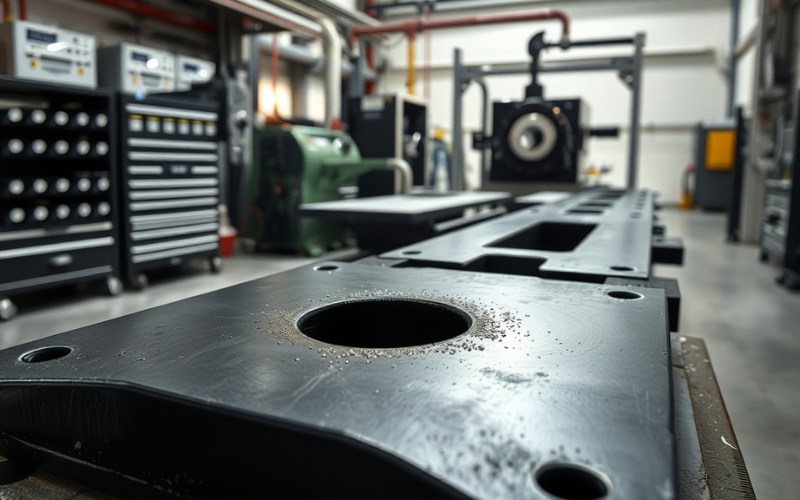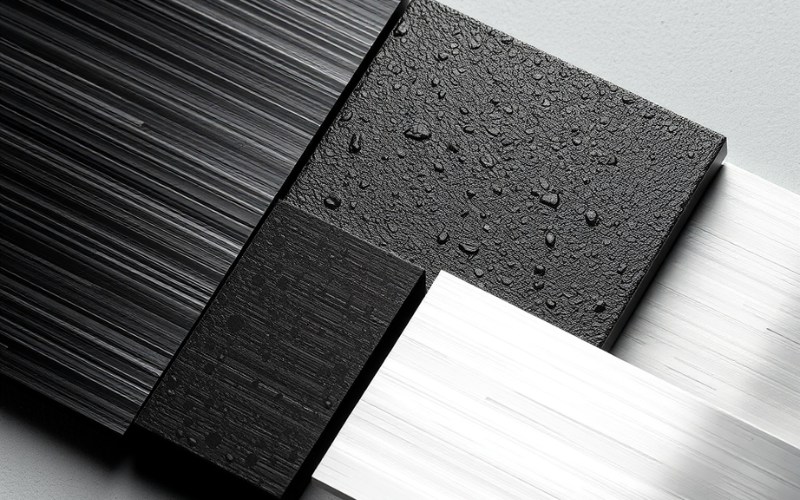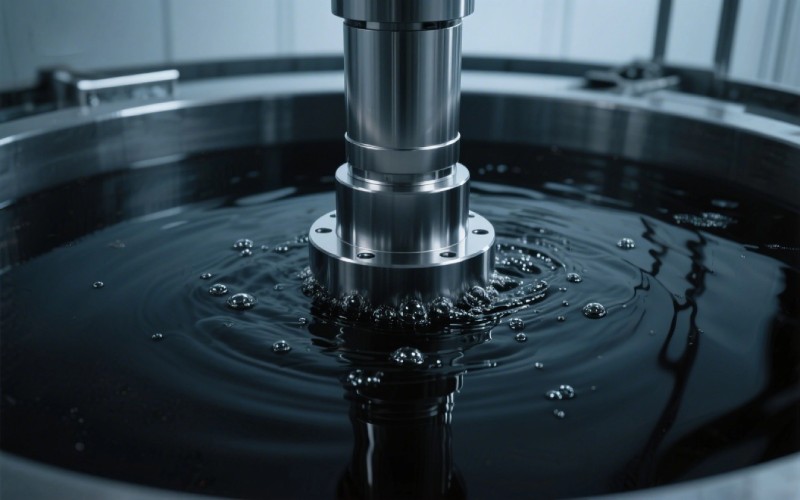Laissez Istar vous aider à démarrer votre projet avec notre expérience et notre savoir-faire !
Téléchargez vos fichiers de conception et vos exigences de production et nous vous répondrons dans les 30 minutes !

I’ve worked with finishing metals for many years, and a common question I get is, “Can you anodize steel?” It’s a good question. Most people think of anodizing as the colorful, strong coating on things made of aluminum. But for steel, it’s not quite the same. You can’t anodize steel the same way you do with aluminum, but there is a special method that gives a similar protective result. This article will explain the interesting way steel is anodized, the reasons for doing it, and how it’s different from other ways to finish metal. If you use steel parts, maybe from CNC machining, knowing about this process will help you choose the best way to protect and improve them.
In my line of work, I hear the word “anodizing” a lot, but many people don’t know what it is. Basically, anodizing is an electrochemical process that makes the natural oxide layer on a metal’s surface thicker. It’s called anodizing because the metal part becomes the anode, or the positive pole, in an electrolytic setup. This is a type of electrolytic passivation. Anodizing is an electrochemical process that changes the metal surface into a nice-looking, strong finish that resists rust and damage.
The main reason to anodize metals is to make them stronger and more resistant to rust and general wear. The coating that forms helps paint and glue stick much better than they would to plain metal. You can find anodized coatings on many things, from colorful hiking clips to important parts in cars and planes. While aluminum alloys are anodized most often, there are ways to do it with other metals like titanium, magnesium, and zinc. You can also add color because the coating is porous and can absorb dyes, which is great for making things look good. Simply put, anodizing is a great way to improve how a metal part works and looks.
This is the key question. If you try to anodize steel with the same acidic liquid bath (usually sulfuric acid) that’s used for aluminum alloys, you get a major issue: rust. Steel is an iron alloy, and it reacts with the acid to create iron oxide, which we call rust. This rusty layer, unlike the helpful aluminum oxide on aluminum, flakes off and actually makes the metal underneath rust even faster. So, instead of making a strong, protective coating, the normal anodizing process ruins the steel surface.
The main difference is the kind of oxide layer that is created. On aluminum, the aluminum oxide (Al₂O₃) is a hard, steady layer that doesn’t cause rust and becomes part of the substrate. It does a great job of protecting the underlying metal. On steel, the iron oxide (rust) is full of tiny holes and is weak. It doesn’t protect the steel and makes the steel surface break down faster. So, if you put steel parts in a regular anodizing tank, you won’t get the protective coating you want. You’ll just have a rusty mess. I learned this early in my job, and it shows why it’s so important to know about the metals you’re using, especially for things like CNC machining.
Since the usual method doesn’t work, how do we get a protective oxide layer on steel? The solution is to use a different chemical method. It is possible to anodize steel, but it needs a completely different setup, which is usually found in labs or special factories. Instead of an acidic electrolyte, the process for steel uses a hot, caustic solution, like sodium hydroxide (NaOH) or potassium hydroxide (KOH). This is very different from the sulfuric or chromic acid baths used for aluminum.
In this electrolytic process, the steel part is still the anode, but the chemical reaction is completely different. The aim is to create a special kind of iron oxide called magnetite (Fe₃O₄) on the steel surface. This is often called a black oxide coating. It’s a conversion coating, which means it changes the surface of the steel itself instead of adding a new layer on top. The process needs careful control of the caustic solution’s strength and temperature, which is usually kept just above 70°C. A magnetic stirrer is also used to make sure the electrolyte is mixed well. This careful control is needed to form the right protective magnetite layer and prevent rust. It’s a much more difficult process for steel.
Magnetite is the most important part of the steel anodizing process. Unlike the damaging red rust, magnetite is a steady, black iron oxide that sticks very well to the steel surface and creates a protective shield. This magnetite layer offers good corrosion resistance and wear resistance. You can think of it as a “good rust” that helps the steel instead of hurting it. Creating this magnetite film is the main goal of the process to anodize steel.
This magnetite coating is what gives “anodized” steel its black or dark gray color. The thickness of the coating decides how much protection the steel gets. The thickness depends on how long the steel part stays in the electrolytic bath and the amount of voltage used. Higher voltages and temperatures can make the magnetite layer form faster. This magnetite is the reason we can say we anodize steel, even though the science behind it is very different from anodized aluminum. This is an important fact for anyone working with CNC and finishing metals.
| Propriété | Red Rust (Ferric Oxide) | Magnétite (Fe₃O₄) |
|---|---|---|
| Regarder | Reddish-brown, flaky | Black, solid layer |
| Protection | Causes more rust | Provides corrosion resistance |
| Sticking Power | Bad, flakes off | Strong, sticks to the steel surface |
| Comment c'est fait | Uncontrolled rusting | Controlled electrolytic process |

So, after going through the special process to anodize steel, you have a part with a nice magnetite coating. What are the real benefits? The biggest benefit is better corrosion resistance. The stable magnetite layer works like a shield, protecting the steel surface from things that cause rust. This is a big step up from bare steel, which rusts very easily. This improved durability also makes the steel tougher against scratches, abrasion, and daily wear and tear.
Besides protection, the anodizing process also makes the steel look better and work better in some ways. The black oxide layer can be a nice decorative finish, which might mean you don’t need to paint or coat it separately. The oxide layer also provides some electrical insulation, which can be useful in certain situations. So, when you decide to anodize steel, you get more than just protection from corrosion; you also get a harder, stronger, and sometimes better-looking surface. It’s a way to enhance the overall quality and lifespan of your steel parts. The wear resistance is a big plus for many CNC machined parts.
From my own experience, I can tell you that the anodizing process for steel is a careful, step-by-step job. Doing each step correctly is key to success.
This process is complicated, but it’s how we are able to successfully anodize steel and get that great protective coating.
When you’re thinking about how to protect steel parts, it’s good to know how steel anodizing (or black oxide coating) compares to other common treatments for surfaces.
Choosing between these methods depends on what you need for your project. You need to think about how much corrosion resistance and wear resistance you need, how exact the part’s size must be, and what you want it to look like. To anodize steel gives a special mix of these features.

Even though the process to anodize steel is very helpful, it has some difficulties and limits. I’ve seen a few myself. The process is harder and not as common as aluminum anodizing. This can make it cost more and be harder to find a company that does it. It’s not as easy to find a place that can commercially do this for steel as it is for aluminum alloys.
The magnetite coating that is created gives good corrosion resistance, but it might not be as strong as other types of coatings, like heavy-duty paint or plating, in very rough conditions. The thickness of the anodized layer is also limited. Another thing to think about is that the process doesn’t work for every kind of steel. For example, steels with a lot of carbon can be tricky because the carbon can get in the way of the electrolytic process. The process needs very exact control of voltage and temperature to get a good, even finish. If these are not perfect, the quality of the coating can be bad. This makes it a harder process to get right compared to other options.
Even with the difficulties, there are many products where the good things about anodized steel are very useful. The better corrosion resistance and wear resistance make it a top choice for many machine parts, especially those made with CNC machining where exact sizes are important. The fact that the black oxide coating changes the size of the part very little is a big plus in these situations.
You can find anodized steel parts in the car industry, in electronics, and in the making of tools and guns. The “gun bluing” process is basically a type of steel anodizing. The nice look is also a reason it’s used for things like steel kitchen tools. Any product where you need to protect a steel part from rust and small scratches without changing its size very much is a good fit for this process. It’s a special but important tool for anyone working with finishing metals.
Whether you can anodize a certain type of steel really depends on what it’s made of. Stainless steel, especially types with a lot of chromium, works better with processes like anodizing. The chromium helps to make a steady oxide layer, which makes the process a bit easier than with other steels. Black anodized stainless steel is popular because it looks good and is protective.
Carbon steel can also be anodized, but it usually needs more careful cleaning and control of the process. Sometimes, a method that involves spraying a film of aluminum onto the carbon steel is used before anodization to make the surface better. This lets a hard anodized film be created on the carbon steel. This mixed method gives you the strength of carbon steel and the great anodizing features of aluminum. So, while you can treat both stainless steel and carbon steel, the specific process for steel will be different. When you want to anodize steel, it’s very important to know which specific alloy you have.